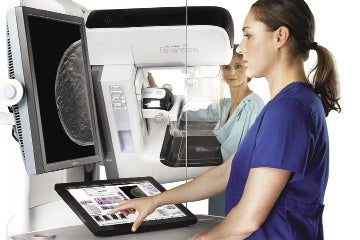A 2.3-percent tax doesn’t sound like much, but taking it directly off the top of medical device companies’ sales could have widespread impacts on businesses large and small, industry experts say.
Since the inception of the federal levy in 2013, the industry has been trying to have it repealed. While past efforts at overturning the tax that was part of the Affordable Care Act have failed, this could be the year it goes away. The House has passed a bill repealing it. Now that it’s before the Senate, and although President Obama could veto any repeal, industry representatives continue to lobby to get rid of the tax.
The tax is taken from companies that produce medical devices, culling 2.3 percent from a company’s U.S. sales. And it’s been blamed for the loss of an estimated 39,000 jobs in the industry and reduced research and development in the field — an area in which the U.S. is seen as a world leader. Both are issues that affect broad swaths of an industry that has a strong presence in Massachusetts, from manufacturers such as Boston Scientific to plastics companies that produce specific components or larger devices.
“Even companies making no profit pay the tax, which makes it harder for entrepreneurs to attract the investment required to support innovative new companies,” said Stephen MacMillan, the chairman, president and CEO of Hologic Inc., which has operations in Marlborough. “We pay more than $20 million in medical device taxes annually. This serves as a disincentive for investments in research and development, and for additional hiring, especially in the U.S.”
The tax has had a significant impact on Hologic, he said, since the company sells 75 percent of its products in the U.S. Unlike other taxes, said Massachusetts Medical Device Industry Council (MassMEDIC) President Thomas Sommer, this is not a levy that can be passed on to the end user because medical devices are usually sold through long-term contracts.
“Hospitals and clinics have, in effect, refused to pay the increase,” Sommer said. “Manufacturers have tried to add the 2.3 percent but the invoice has been returned with the original amount (that is, contracted prior to the tax’s imposition) paid.”
Hologic manufactures diagnostic products, medical imaging systems and surgical products, most of which are affected by the tax.
“Any time you increase a company’s tax bill, you sap financial resources that would otherwise be available to invest in research and development, new hiring, or other business priorities. While a reduction in (research and development) would not have a huge impact in the short run, over the long run it would hurt our ability to innovate and bring new products to market,” he said.
Cascade effect
While the levy only taxes the final manufacturer of the devices, that impact on revenues has a trickle-down effect on suppliers.
“The price pressures the OEMs are under – they then turn to the suppliers to say, ‘Cut costs and cut prices because we need to be able to lower our overall cost,’ ” Sommer said. “It has a ripple effect throughout the industry.”
The lost revenue has resulted in belt-tightening measures, with companies primarily cutting back on staff or R&D.
The Advanced Medical Technology Association (AdvaMed), an industry group, estimates that up to 195,000 jobs have been lost as a result of manufacturers’ response to the tax, with 39,000 of them having come directly from the medical device sector. In a recent survey, the organization found that 71 percent of the companies would rehire employees if the tax were repealed, while 85 percent would reinstate research that had been cut.
While the job losses have an impact, it’s the cut in R&D that could have a longer-lasting impact on the industry’s competitiveness.
“If the medical device tax were repealed, it would free up dollars that could be reinvested in R&D, new hiring or other business priorities,” MacMillan said.
The cost of the tax for subcontractors is harder to quantify, said Al Cotton, a spokesman for Clinton-based Nypro. Contracted companies are always negotiating over price, he said, and it’s uncertain how much of that has been influenced by the new tax. However, Cotton said anything that benefits the companies Nypro services would also benefit Nypro.
The impact is not just a financial crunch, but a possible slowing of contracts as the development of new technology by these suppliers slows with a lack of R&D funding, said Matt Giza, vice president and general manager of Cogmedix, of Worcester.
Ultimately, he said, removing the tax could improve the prospects of all companies in the medical device market.
“At a macro level, the tide (raises) all ships. If there is more money in the market, it is potentially going to trickle down to the service providers,” Giza said. “Not all companies are going to put that money directly into research and development, but those that do are going to help the industry in general.”

